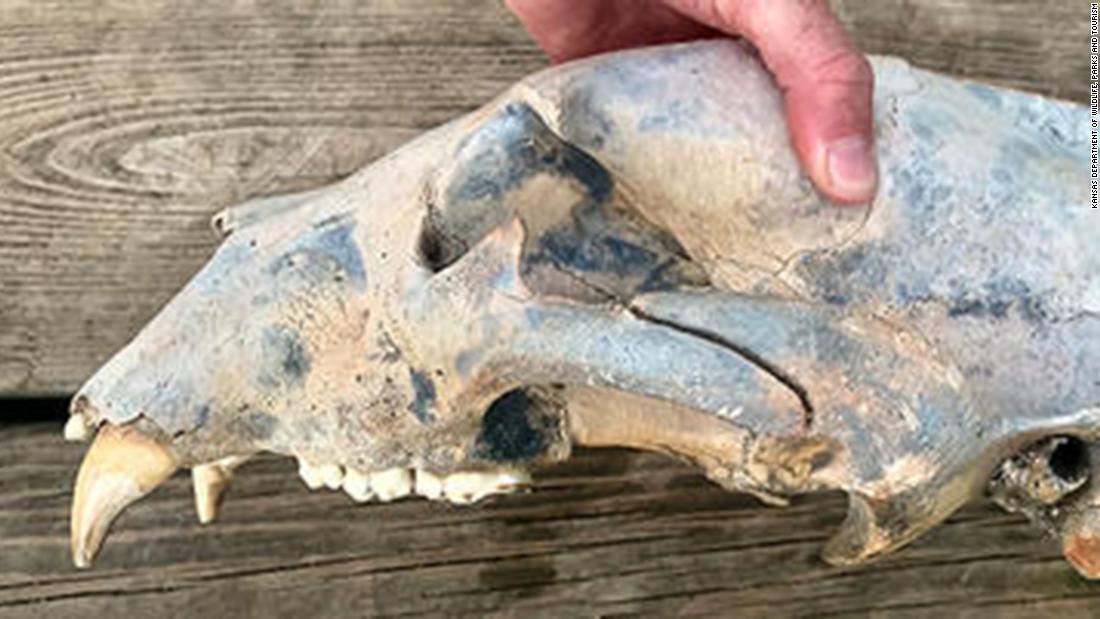The cranium is thought to have been preserved in the sands of the river until finally it was displaced by main flooding this 12 months.
Ashley and Erin Watt had been kayaking down the river in south-central Kansas in August when they observed the cranium protruding from a sandbar, the Kansas Section of Wildlife, Parks and Tourism reported. When they pulled it out, they saw the skull experienced enormous tooth, some the diameter of a human thumb.
The sisters posted the discover on Facebook, exactly where it drew the notice of a wildlife department game warden. He shared the photos with paleontologists from the Sternberg Museum of Normal Record in Hays, Kansas.
The cranium is about 16 inches very long and 8.5 inches extensive and has a fossilized visual appeal, which led the paleontologists to speculate no matter whether it was from a contemporary grizzly or a much more primitive species, the wildlife office stated.
“The bear cranium was washed out of the very same river sediments that routinely develop the skulls and bones of the American bison, some of which could date back again as much as the very last Ice Age,” claimed Mike Everhart, 1 of the Sternberg paleontologists who examined the cranium.
“Whether or not it is hundreds or countless numbers of a long time previous, the skull presents us a superior perception into the richness of life on the plains before Western guy,” Everhart claimed.
The most most likely scenario is that the skull is from a more fashionable species, the wildlife office said, based mostly on the great problem with only a couple of minor teeth lacking.
If it is confirmed to be a grizzly cranium, it would be the first physical evidence of the animal in the point out, according to the University of Kansas. Historic reports suggest the animal was widespread, primarily in locations in the vicinity of rivers, streams and close by ridges, but the species was wiped out in Kansas in the mid-1800s, the university and wildlife division mentioned.
Source hyperlink
